VISION
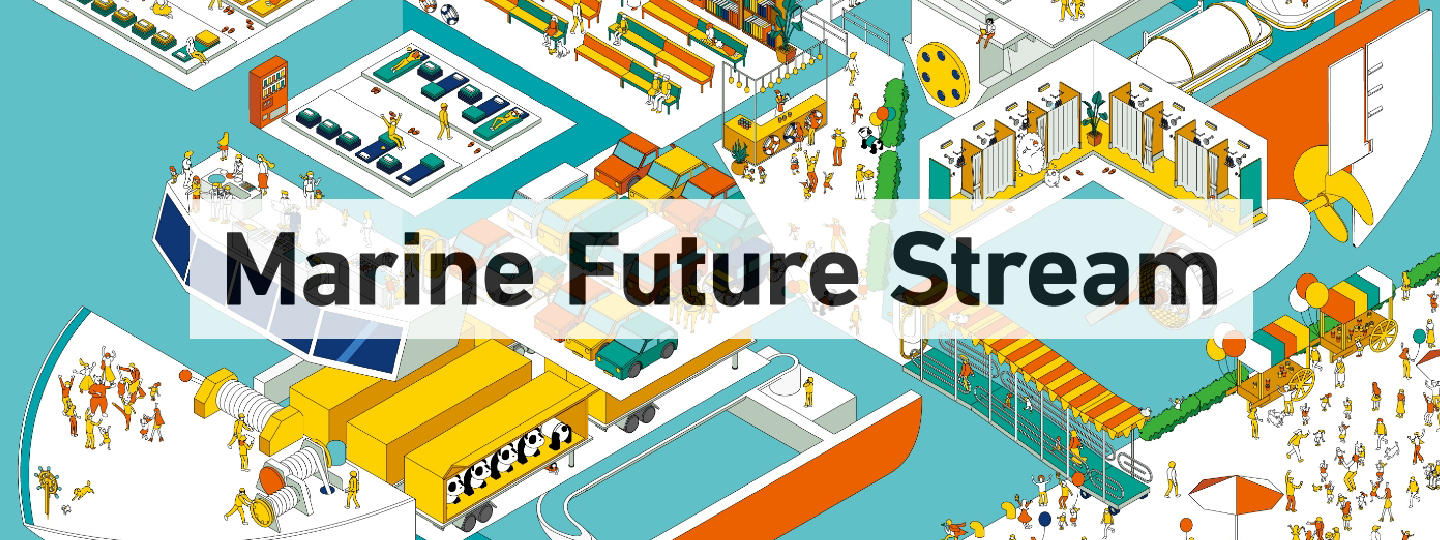
The Mitsubishi Heavy Industries (MHI) Group supports the development of social infrastructure by decarbonizing industry and electrifying and deploying intelligent mechanical systems. As an MHI Group company, Mitsubishi Shipbuilding aims to strengthen its position as a marine systems integrator that generates innovation in marine-related engineering and service businesses beyond the conventional shipbuilding model.


Growing DX technology offerings and service businesses beyond the traditional borders of the shipbuilding industry
Building a sustainable relationship between people and the ocean to realize a circular society where all can live in comfort and peace
Digitalization of the Maritime Industry
Employing DX technology to create a safer and more efficient working environment for all involved in the maritime industry
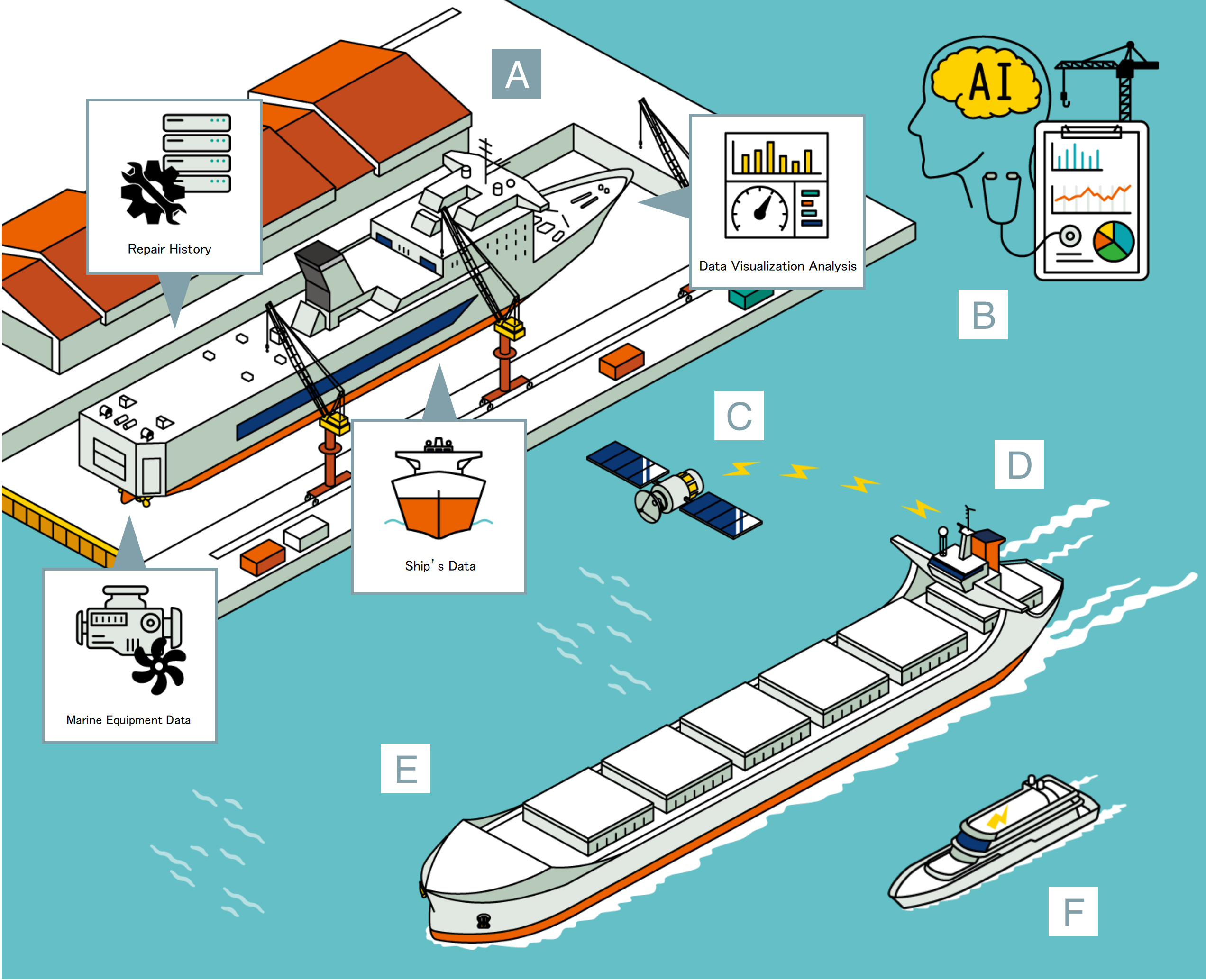
-
【A】MRO* Service
*Maintenance,Repair and Operation
- Utilizing ship data to optimize dry docking and parts arrangement,providing complete life-cycle support
-
【B】AI Predictive Diagnosis
(2025-)
- MRO service incorporating AI to optimize operation rates and maintenance costs
-
【C】Navigation Assistance System
- Contributing to safer navigation by assisting ships’ crews with situational awareness and collision avoidance
-
【D】Remote & Autonomous Navigation
- Enabling safer navigation
-
【E】Automated Navigation Control System(2030-)
- Enabling automated navigation control in congested areas
-
【F】EV/Hybrid/FC Vessels
(2030-)
- Utilizing battery and fuel cell propulsion to enable zero emission and reduce maintenance cost
Acceleration of Offshore Resource Development
Contributing to the safe development of offshore resources and environmental protection by proven technologies
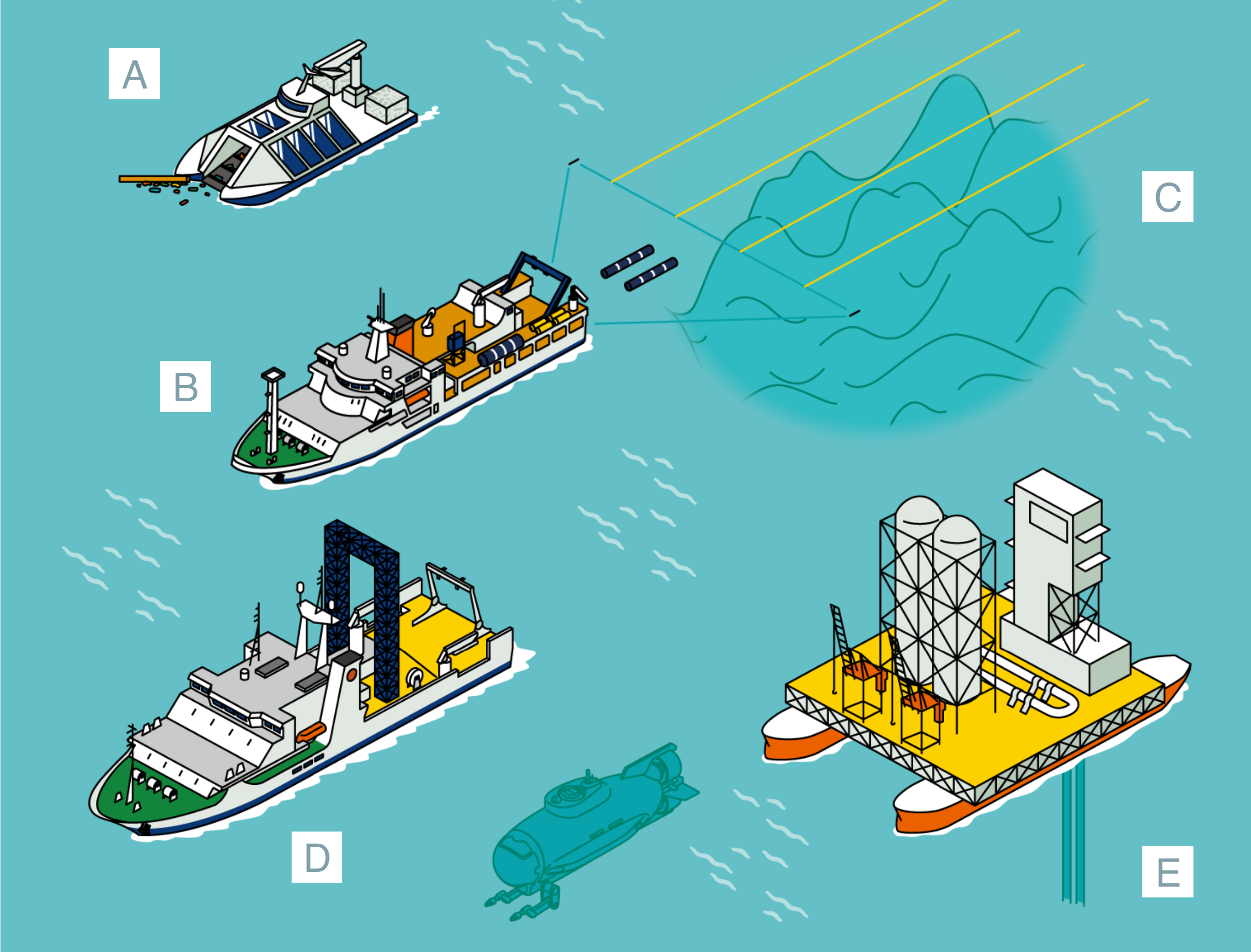
-
【A】Marine Debris Collection
-
(2025–)
-
Specialized vessels that clean the ocean by collecting marine plastics and other debris
-
【B】Offshore Exploration and Cable Laying System
- Providing various offshore and underwater operations by research vessel and cable layer
-
【C】Offshore Resource Development Integral System
- Providing exploration, excavation and the necessary integral system for hydrothermal deposits and cobalt rich crust
-
【D】Offshore Resource Development Operation
- (2040–)
- Providing offshore operations of exploration, excavation and refining of undersea resources
-
【E】Offshore Resource Development Mother Ship
Engaging in a wide range of offshore resource development and cable laying activities(2040–)
Enhancement of User Experience on the Ocean
Enabling utilization of offshore space for enhanced passengers’ experience
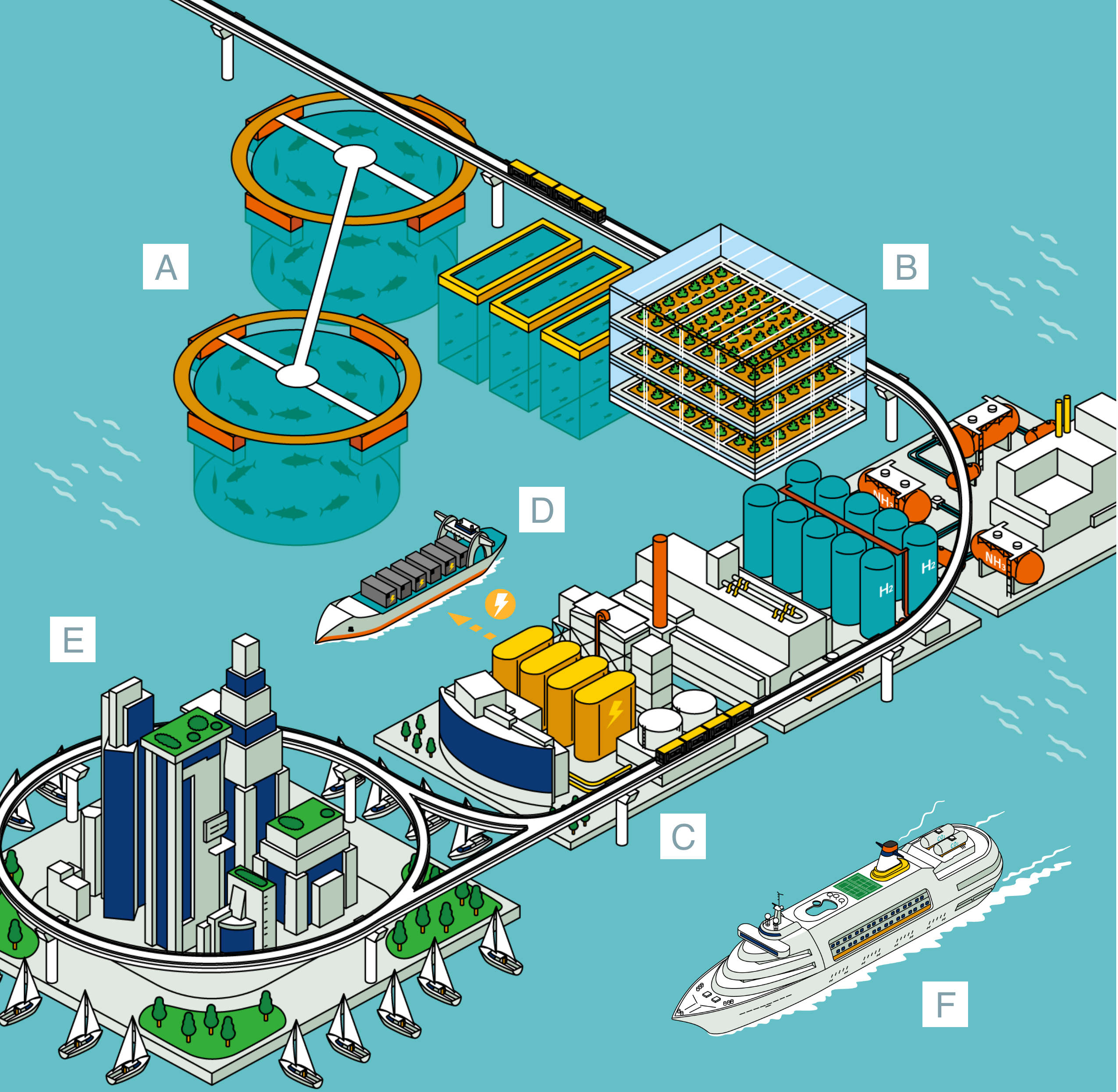
-
【A】Offshore Floating Modules
- (2040-)
- Modularized aquaculture and floating plants provide flexible capacity to meet emerging demands
-
【B】Floating Food Production
- (2040-)
- Providing modular aquaculture and floating vegetable farms
-
【C】Offshore Power Storage Plant
- (2030–)
- Storing electricity generated from offshore power plants
-
【D】Power Transfer Vessel
(2040-)
Employing batteries for seaborne transportation of electricity from offshore power plants to on-shore users
-
【E】Floating Cities
(2040-)
Realizing a circular society, where production, consumption and recycling take place within offshore floating cities
-
【F】Small Size Cruise Ships and ROPAX Vessels
Enhancing passengers’ experience on the ocean
Leading decarbonization of ships and accelerating offshore utilization of green energy and carbon capture
Promoting harmony between people and the environment, and realize a sustainable and resilient decarbonized society through maritime business
Decarbonization of Ships
Expanding the application of SOx scrubbers and LNG fuel,and working toward the adoption of electric propulsion and ammonia fuel in the future
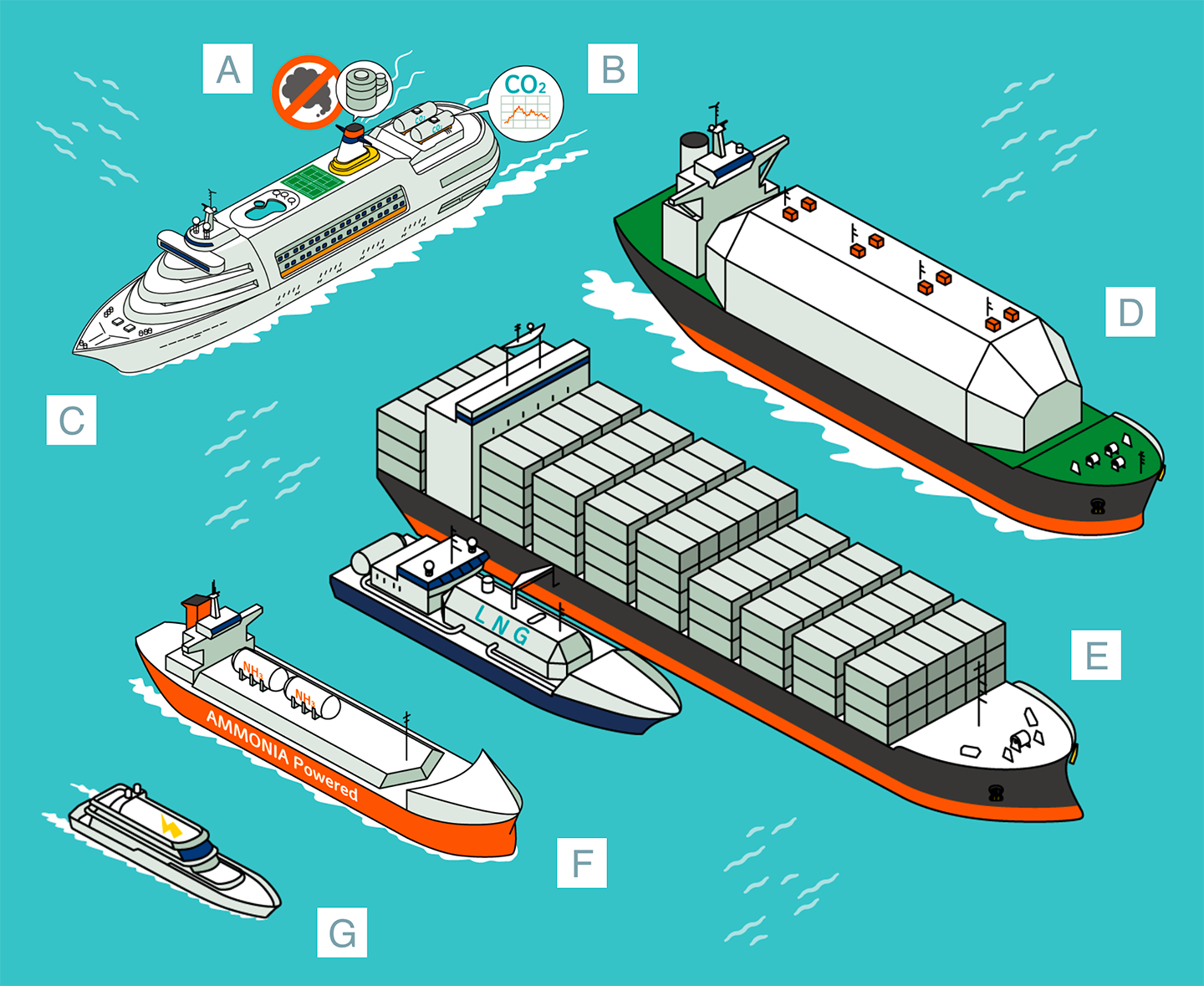
-
【A】SOx Scrubber
- Abating sulfur content from ships’ exhaust gases
-
【B】CO2Emissions Measuring System
- (2025–)
- Visualizing ships’ CO2 emissions to enable cleaner navigation
-
【C】Small Size Cruise Ships and ROPAX Vessels
- Enhancing passengers’ experience on the ocean
-
【D】LNG Carrier
-
【E】LNG Fuel Gas Supply System
- Enabling the shift to natural gas-powered vessels by providing gasification of LNG and delivery to ships' engines
-
【F】Ammonia Fuel Gas Supply System and Related Equipment
- (2030–)
- Supplying ships with ammonia,a carbon-free fuel
-
【G】EV/Hybrid/FC Vessels
- (2030–)
- Utilizing battery and fuel cell propulsion to enable zero emission and reduce maintenance cost
Expansion of Renewable Energy Utilization
Driving growth in offshore wind farms and production of green fuels utilizing renewable energy
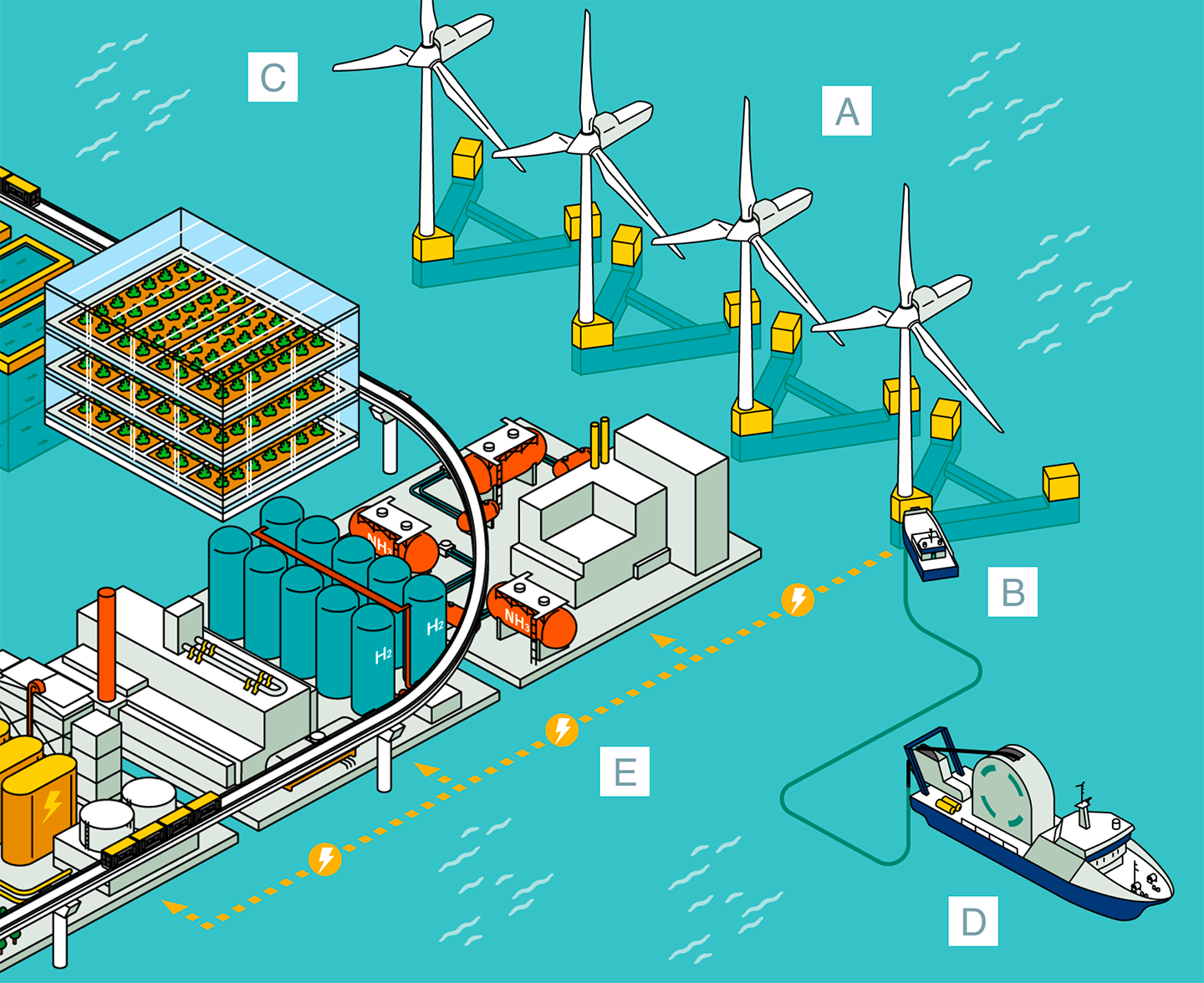
-
【A】Semi-submersible Floater for Wind Turbines
- (2023–)
- Enabling deployment of offshore wind farms in deep water areas
-
【B】CTV*
-
- Crew Transfer Vessel
- Transferring workers to offshore wind farms for operation and maintenance activities
-
【C】Floating Offshore Wind Farm
- (2027–)
- Generating offshore renewable energy
-
【D】Cable Supply and Laying Vessel
- (2027–)
-
【E】Green Ammonia Production
- (2040–)
- Producing green ammonia by utilizing renewable energy Green Hydrogen from offshore wind farms
Implementation of CCS/CCUS
Advancing CO2 storage and utilization from captured industrial emissions

-
【A】CO2Capture Plant
- Capturing CO2 from power plants and other industrial processes
-
【B】Liquefied CO2 Carrier
- (2025–)
- Providing seaborne transportation of captured CO2
-
【C】On-board Carbon Capturing System
- (2030–)
- Capturing CO2 from ships’ exhaust gases, and enabling utilization or permanent storage of CO2 once back at port
-
【D】Offshore CO2 Injection Facilities
- (2035–)
- Injecting captured CO2 deep into the seabed for storage

